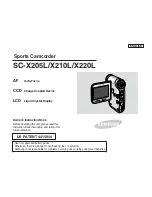
Fax: +44 (0)1604 231489
28.4.8.2
Introduction
Over the last few years the equipment, applications, software, and understanding
connected with thermography have all developed at an astonishing rate. As the
technology has gradually become integrated into mainstream practises, a correspond-
ing demand for application guides, standards and thermography training has arisen.
The UKTA is publishing this technical note in order to establish a consistent approach
to quantifying the results for a ‘Continuity of Thermal Insulation’ examination. It is in-
tended that specifiers should refer to this document as a guide to satisfying the re-
quirement in the Building Regulations, therefore enabling the qualified thermographer
to issue a pass or fail report.
28.4.8.3
Background information
Thermography can detect surface temperature variations as small as 0.1 K and
graphic images can be produced that visibly illustrate the distribution of temperature
on building surfaces.
Variations in the thermal properties of building structures, such as poorly fitted or
missing sections of insulation, cause variations in surface temperature on both sides
of the structure. They are therefore visible to the thermographer. However, many
other factors such as local heat sources, reflections and air leakage can also cause
surface temperature variations.
The professional judgement of the thermographer is usually required to differentiate
between real faults and other sources of temperature variation. Increasingly, thermo-
graphers are asked to justify their assessment of building structures and, in the ab-
sence of adequate guidance, it can be difficult to set definite levels for acceptable or
unacceptable variation in temperature.
The current Standard for thermal iamging of building fabric in the UK is BS EN
13187:1999 (BS EN 13187:1999, Thermal Performance of Buildings—Qualitative de-
tection of thermal properties in building envelopes—Infrared method (ISO 6781:1983
modified). However, this leaves interpretation of the thermal image to the professional
expertise of of the thermographer and provides little guidance on the demarcation
between acceptable and unacceptable variations. Guidance on the appearance of a
range of thermal anomalies can be found in BINDT Guides to thermal imaging (Infrared
Thermography Handbook; Volume 1, Principles and Practise, Norman Walker, ISBN
0903132338, Volume 2, Applications, A. N. Nowicki, ISBN 090313232X, BINDT, 2005).
28.4.8.3.1
Requirements
A thermographic survey to demonstrate continuity of insulation, areas of thermal
bridging and compliance with Building Regulations should include the following:
28
Publ. No. 1558550 Rev. a557 – ENGLISH (EN) – October 7, 2011
223
28 – Introduction to building thermography
Summary of Contents for B6 series
Page 2: ......
Page 4: ......
Page 6: ......
Page 8: ......
Page 9: ...User s manual Publ No 1558550 Rev a557 ENGLISH EN October 7 2011...
Page 12: ...INTENTIONALLY LEFT BLANK xii Publ No 1558550 Rev a557 ENGLISH EN October 7 2011...
Page 192: ...it 26 174 Publ No 1558550 Rev a557 ENGLISH EN October 7 2011 26 Dimensional drawings...
Page 325: ......
















































